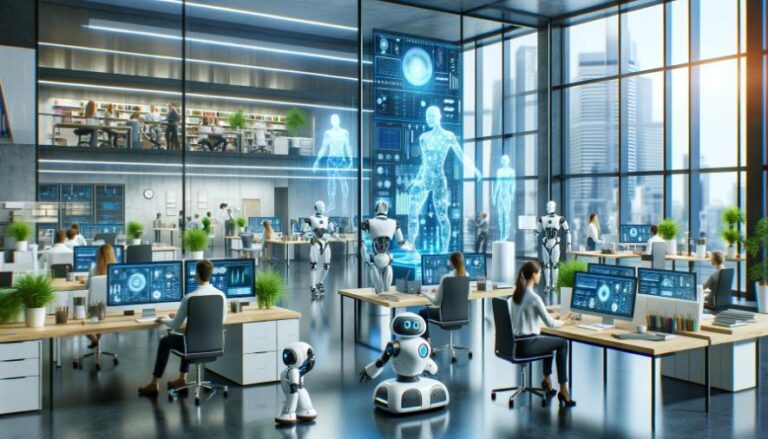Additive Manufacturing and 3D Printing: How AI is Revolutionizing the Industry
The Intersection of AI and Additive Manufacturing
Additive manufacturing, also known as 3D printing, has gained significant popularity in recent years due to its ability to quickly produce intricate and complex designs. This technology has revolutionized the manufacturing industry, making it possible to create prototypes and finished products without the need for traditional manufacturing processes. However, with the ever-increasing demand for customization and speed, there has been a growing need for a more efficient and effective approach to additive manufacturing. This is where artificial intelligence (AI) comes into play.
Intelligent Designing and Printing
Moreover, AI is also being used to optimize the printing process itself. By analyzing real-time data from sensors, AI can adjust printing parameters and detect any deviations from the expected outcomes. This results in a higher success rate and reduces material and time wastage. Furthermore, AI can also identify potential areas of support structures, thus reducing the need for manual input and minimizing the risk of failure during printing.
After printing, post-processing is required to remove support structures and refine the surface finish of the product. This is a tedious and time-consuming process, but AI algorithms can analyze the design and printing data to determine the optimal post-processing techniques for each specific product. This not only streamlines the post-processing stage but also ensures consistency and quality across all products.
The Benefits of Using AI in Additive Manufacturing
The integration of AI in additive manufacturing has several benefits that are driving the growth of this industry. Here are some of the key advantages:
By automating the design process and optimizing printing parameters, AI significantly increases the efficiency and speed of additive manufacturing. This means that manufacturers can produce more products in a shorter amount of time, resulting in reduced lead times and increased production capacity.
The automated design process and optimized printing parameters also result in cost savings for manufacturers. By minimizing material and time wastage, manufacturers can save on production costs and increase their profit margins.
AI algorithms are continuously learning and improving, which means that the designs produced are constantly being optimized for efficiency and quality. This results in better product quality and ultimately leads to increased customer satisfaction.
With the help of AI, manufacturers can offer more customized solutions to their clients in a shorter amount of time. The automation of the design process and the ability to quickly adjust printing parameters makes it possible to produce unique products tailored to each customer´s needs.
The ability of AI to optimize printing parameters and reduce material wastage also contributes to environmental sustainability. With the world becoming more conscious of the impact of manufacturing on the environment, the use of AI in additive manufacturing can help reduce carbon footprint and promote sustainable production practices.
The Future of AI in Additive Manufacturing
The use of AI in additive manufacturing is still in its early stages, but its potential for growth and advancement is immense. As AI algorithms continue to evolve and become more sophisticated, it is expected that their integration into additive manufacturing will become more widespread. This could also lead to further developments in the materials used for 3D printing, as AI can analyze data to determine the best materials for specific products.
Conclusion
AI has already proven to be a game-changer in additive manufacturing, and its continued development and integration into this industry will only strengthen its impact. The benefits of using AI, such as improved efficiency, cost savings, and increased customization, make it a valuable tool for manufacturers to stay competitive in the fast-paced world of additive manufacturing. As we continue to push the boundaries of what is possible with AI, we can only expect to see more revolutionary advancements in the field of additive manufacturing.

